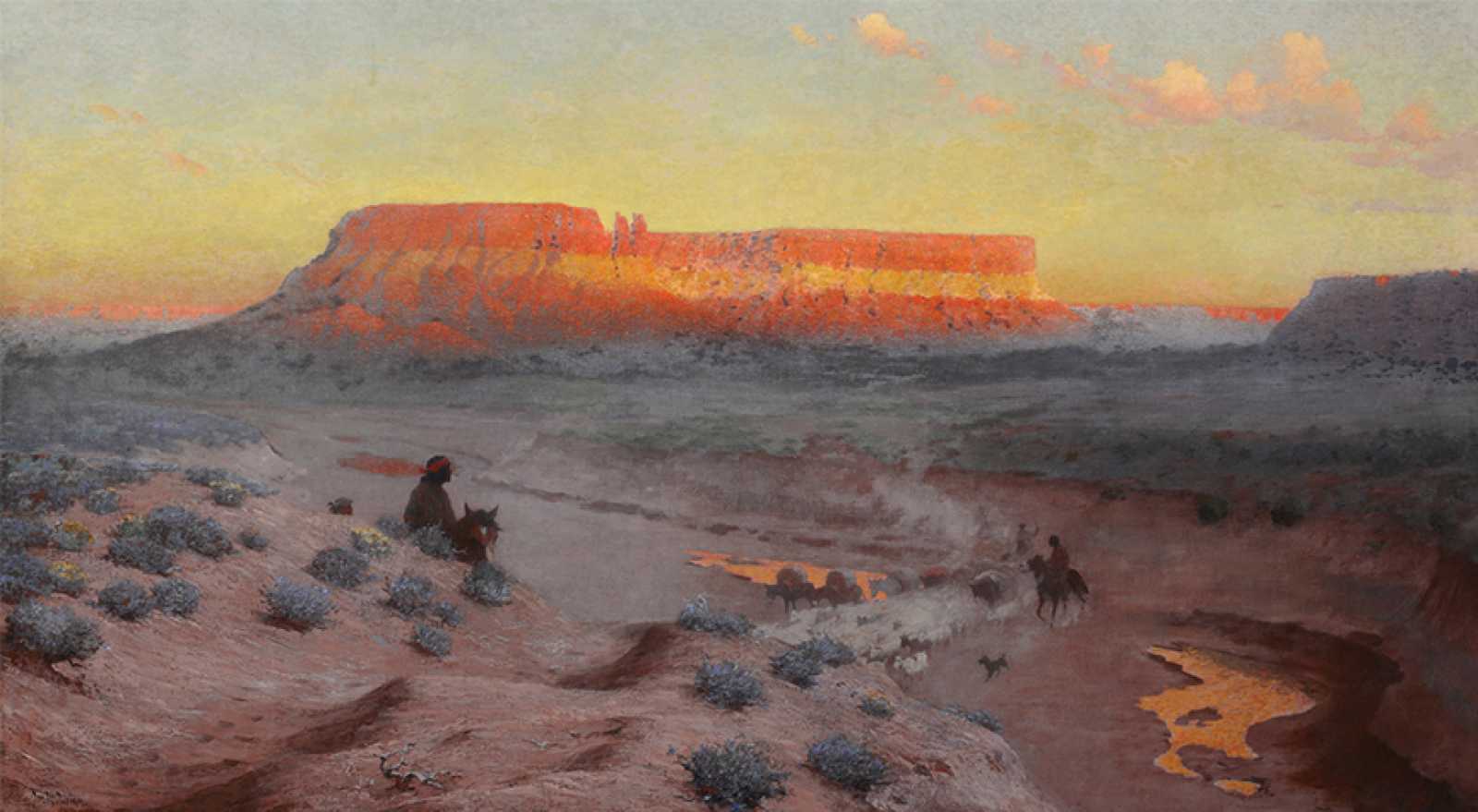Artworks of the Week
William Robinson Leigh
Originally from West Virginia, William Robinson Leigh studied painting at the Baltimore Institute before continuing his studies in Munich, Germany, where he won a number of painting awards. Upon returning to the US, he settled in New York and became a successful illustrator. In 1906, Leigh embarked on his first tour of the West when the Santa Fe Railroad offered him travel in exchange for depicting the Grand Canyon. Though he never moved to the West, he continued to travel regularly, and the landscape and skyscape fascinated him throughout his career.
At that time, Leigh also visited the Zuni Pueblo in New Mexico and recorded in his notebook that his visit there was like “a waking dream. . . of endless beauty.” He described the sacred Dowa Yalanne (Thunder Mountain)—a prominent feature near the pueblo and the subject of this painting—as “bathed in the magical light of the red, low sun while the town and the plains were already in shadow.” Influenced by the 19th-century American tradition of panoramic landscape painting, Leigh carefully constructed Thunder Mountain to emphasize both a sense of grandeur and an Arcadian portrayal of the Zuni in their ancient homeland.
William Robinson Leigh (American, 1866-1955), Thunder Mountain, ca. 1910, oil on canvas, 40 1/2 × 72 1/2 inches. Museum purchase with funds provided by the George Montgomery Acquisition Fund, 2014.59
Lino Tagliapietra
Considered one of the greatest living artists working in glass, Lino Tagliapietra was born in 1934 in Murano, Italy and became an apprentice glassblower at age 11. Even at a young age Tagliapietra exhibited an immense dexterity for glass and, at age 21, was given the title of “Maestro”—an honor reserved for only the best glassblowers. In 1979, he visited Seattle for the first time and introduced students at the renowned Pilchuck Glass School to the long tradition of Venetian glassblowing, thereby forming a cross-cultural collaboration that helped shape the identity of American studio glass.
Tagliapietra’s creations employ a range of spectacular forms and shapes, intense colors and intricate patterns. Bilbao was created using the blown-glass technique, with multiple processes—incalmi (fusing), canes (crisscross patterning), battuto and inciso cutting (both cold work finishing). Bulbous in the center and elongated at the top and bottom, the work is striped in multiple directions and patterned in overlapping layers, with a combination of clear and colored glass.
Lino Tagliapietra (Italian, born 1934). Bilbao, 2001, blown glass with multiple incalmi, multicolor canes, turned axis; battuto and inciso cutting, 24 1/2 x 10 x 7 inches. Museum purchase with funds provided by the Helene E. Berman Charitable Remainder Trust, 117-2009


